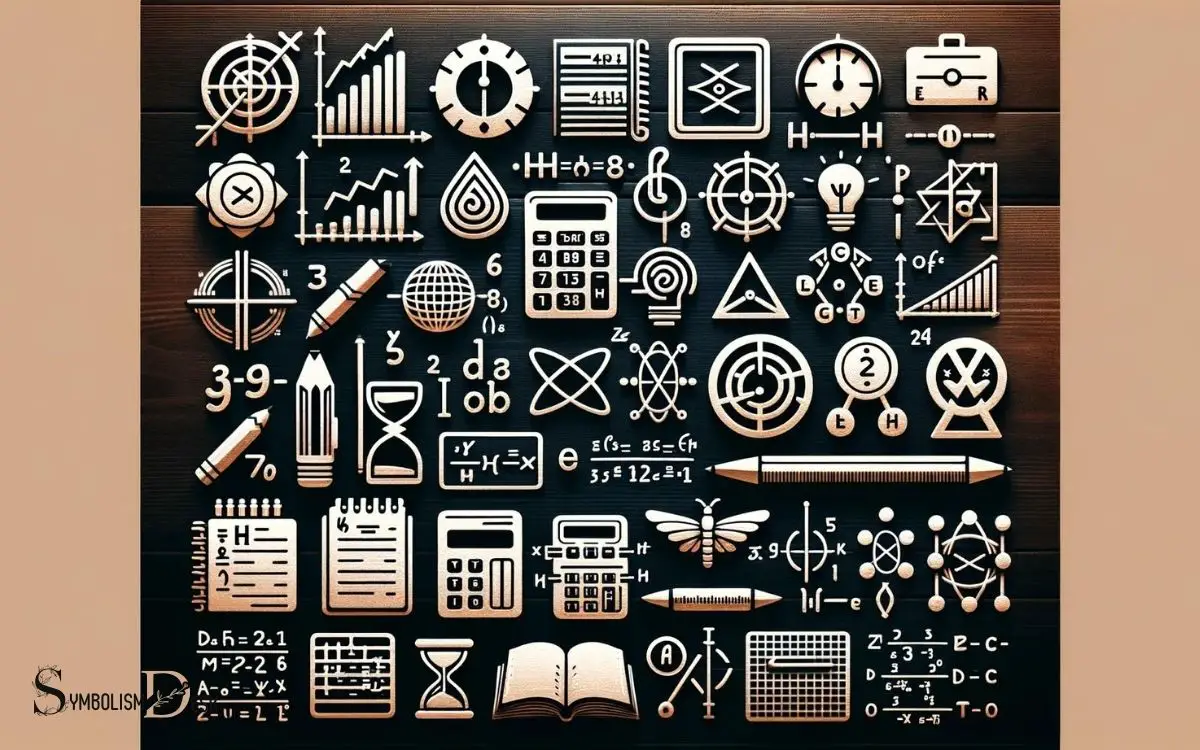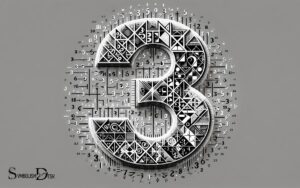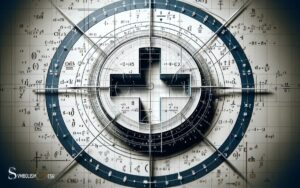Maths Symbols for Class 12: Algebra!
Comprehensive Guide to Math Symbols for Class 12 Students
Mathematics in Class 12 encompasses a variety of symbols that are vital for understanding and solving problems across different topics such as algebra, calculus, trigonometry, probability, statistics, matrices, vectors, and geometry.
Knowing these symbols is a cornerstone for academic success in math at this level.
The mathematical symbols used in Class 12 can be categorized by their respective fields:
Essential math symbols form the language of mathematics, paving the way for advanced problem-solving in Class 12.

Key Takeaway
Essential Math Symbols for Class 12: A Comprehensive Reference
| Category | Symbol | Description |
|---|---|---|
| Algebra | +, −, ×, ÷ | Basic arithmetic operations |
| Algebra | =, ≠, <, >, ≤, ≥ | Equality and inequality symbols |
| Trigonometry | sin, cos, tan | Trigonometric functions |
| Calculus | dy/dx, ∫, lim, Σ | Differentiation, integration, limits, summation |
| Probability & Statistics | P(A), μ, σ, n | Probability, mean, standard deviation, sample size |
| Matrices & Vectors | [ ], → | Representations of matrices and vectors |
| Geometry | ∠, |
Algebraic Symbols
Introducing algebraic symbols involves understanding their representation and manipulation in mathematical expressions and equations. These symbols, often letters like x, y, a, b, etc., are used to represent unknown or variable quantities in equations.
They enable us to generalize mathematical rules and make solving complex problems more manageable.
Algebraic symbols are manipulated using mathematical operations such as addition, subtraction, multiplication, and division to solve equations and simplify expressions.
Understanding the properties and behaviors of these symbols is fundamental in mastering algebra, as they form the basis for more advanced mathematical concepts.
Trigonometric Functions
Trigonometric functions play a fundamental role in mathematics, particularly in the study of angles and periodic phenomena.
These functions, including sine, cosine, and tangent, are essential for understanding the relationships between angles and sides of a right-angled triangle.
Additionally, the usage of trigonometric identities enables the simplification and manipulation of trigonometric expressions, making them indispensable in various mathematical and scientific applications.
Angle Measurement in Radians
How do we measure angles in radians and how are they related to trigonometric functions? In mathematics, angles can be measured in degrees or radians.
While degrees are more commonly used, radians are preferred in many mathematical calculations, especially those involving trigonometric functions.
One radian is defined as the angle subtended at the center of a circle by an arc whose length is equal to the radius of the circle.
The relationship between radians and trigonometric functions is fundamental. For example, the sine and cosine functions are often defined in terms of the unit circle, where the angle is measured in radians.
This connection allows for a deeper understanding of circular and periodic phenomena, making radians an essential concept in trigonometry and calculus.
Sine, Cosine, Tangent
As we delve into the topic of ‘Sine, Cosine, Tangent (Trigonometric Functions)’, it is crucial to understand their fundamental roles in mathematical calculations and problem-solving.
- Sine Function: Represents the ratio of the length of the side opposite the angle to the length of the hypotenuse in a right-angled triangle.
- Cosine Function: Represents the ratio of the length of the adjacent side to the length of the hypotenuse in a right-angled triangle.
- Tangent Function: Represents the ratio of the length of the side opposite the angle to the length of the adjacent side in a right-angled triangle.
- Applications: These functions are widely used in various fields such as physics, engineering, and architecture to model periodic phenomena and analyze periodic data.
Understanding these functions is essential for solving problems involving angles and triangles, as well as for analyzing periodic behaviors in real-world scenarios.
Trigonometric Identities Usage
Continuing our exploration of trigonometric functions from the previous subtopic, we now turn our attention to the practical application of trigonometric identities in mathematical problem-solving and analysis.
Trigonometric identities are crucial tools for simplifying expressions, solving equations, and proving mathematical statements involving trigonometric functions.
These identities, such as the Pythagorean identities, double angle identities, and sum and difference identities, enable us to manipulate trigonometric expressions to make them more manageable and to establish relationships between different trigonometric functions.
Through the skillful application of these identities, complex trigonometric equations can be simplified, and various trigonometric properties and equations can be derived.
Understanding and utilizing trigonometric identities are essential for tackling advanced mathematical problems and for applications in fields such as physics, engineering, and computer science.
Calculus Notations
In the context of calculus notations, students in Class 12 typically encounter a wide range of symbols and conventions used to represent various mathematical concepts.
Understanding these notations is crucial for effectively solving problems and grasping the fundamental principles of calculus.
Key notations include:
- Derivative Notation: Represented as dy/dx, this notation signifies the rate of change of one variable with respect to another.
- Integral Notation: The integral of a function f(x) is denoted by ∫f(x)dx, representing the accumulation of quantities over an interval.
- Limits Notation: The concept of limits is denoted by lim(x→a) f(x), indicating the behavior of a function as it approaches a certain value.
- Summation Notation: Represented as Σ, this notation is used to succinctly express the sum of a series of terms.
Understanding these notations is pivotal for mastering calculus concepts.
Probability and Statistics Symbols
After comprehending calculus notations, students in Class 12 transition to learning about the symbols and representations used in probability and statistics, which are foundational to understanding mathematical concepts in this field.
In probability, symbols such as P(A) represent the probability of an event A occurring, while in statistics, symbols like μ and σ denote the population mean and standard deviation, respectively.
Additionally, symbols such as x̄ and s are used to represent the sample mean and standard deviation. Understanding these symbols is crucial for interpreting and solving problems related to probability and statistics.
Furthermore, symbols like Σ (sigma) are used to denote summation in statistical formulas. Mastery of these symbols is essential for students to effectively engage with complex statistical concepts and solve problems in real-world applications.
Matrix and Vector Notations
The study of matrix operations and vector representation is essential for understanding advanced mathematical concepts.
In this section, we will explore the intricacies of matrix operations, including addition, subtraction, multiplication, and inversion, in order to develop a comprehensive understanding of these fundamental operations.
Additionally, we will delve into vector representation to elucidate its significance in mathematical modeling and problem-solving.
Matrix Operations In-Depth
For the study of matrix operations in-depth, a clear understanding of matrix and vector notations is essential for students in Class 12 mathematics.
To delve into the intricacies of matrix operations, students should focus on the following key concepts:
- Matrix Multiplication: Understanding the rules and properties of multiplying matrices is crucial for performing various operations.
- Vector Notation: Learning how to represent and manipulate vectors using matrix notation is fundamental in advanced mathematics.
- Transposition: Grasping the concept of transposing matrices and its significance in matrix operations is essential for further applications.
- Inverse Matrices: Understanding the concept of inverse matrices and their role in solving linear equations and transformations is vital for a comprehensive understanding of matrix operations.
Vector Representation Explained
In the study of matrix and vector notations for Class 12 mathematics, a clear understanding of vector representation is essential. Vectors are quantities that have both magnitude and direction, and they are often represented using column matrices.
For example, a vector in 2-dimensional space can be represented as a 2×1 matrix, while a vector in 3-dimensional space can be represented as a 3×1 matrix.
This representation allows for efficient manipulation of vector quantities using matrix operations, such as addition, subtraction, and scalar multiplication.
Understanding vector representation is crucial for solving problems in physics, engineering, and other fields that involve quantities with direction.
Moreover, mastering vector representation lays the foundation for comprehending more advanced topics in linear algebra and calculus.
Geometry and Coordinate Geometry Symbols
Geometry and coordinate geometry involve the use of various symbols to represent geometric concepts and relationships.
Some of the important symbols used in these branches of mathematics include:
- π (Pi): Represents the ratio of the circumference of a circle to its diameter.
- ∠ (Angle): Denotes the measure of a geometric angle.
- √ (Square Root): Indicates the principal square root of a number.
- (x, y): Represents a point in the Cartesian coordinate system, where ‘x’ is the horizontal coordinate and ‘y’ is the vertical coordinate.
These symbols play a crucial role in conveying precise mathematical ideas and relationships within the realms of geometry and coordinate geometry, aiding in the understanding and communication of complex geometric concepts.
Conclusion
The use of mathematical symbols in class 12 is essential for understanding and solving complex mathematical problems. For example, the use of symbols such as ∑, ∫, and ∈ helps in expressing complex mathematical concepts succinctly. Additionally, mastering the proper use of these symbols and understanding their meanings can greatly aid in the comprehension of mathematical equations and formulas. Moreover, utilizing latex math spacing in written mathematical expressions helps to ensure clarity and readability for others who may need to interpret the work.
Algebraic symbols, trigonometric functions, calculus notations, probability and statistics symbols, matrix and vector notations, as well as geometry and coordinate geometry symbols, all play a crucial role in advanced mathematical studies.
Mastering these symbols is key to success in class 12 mathematics.






